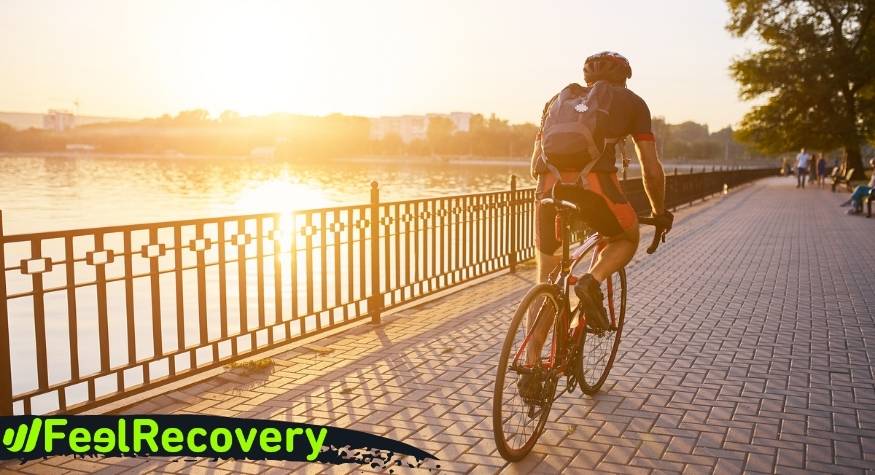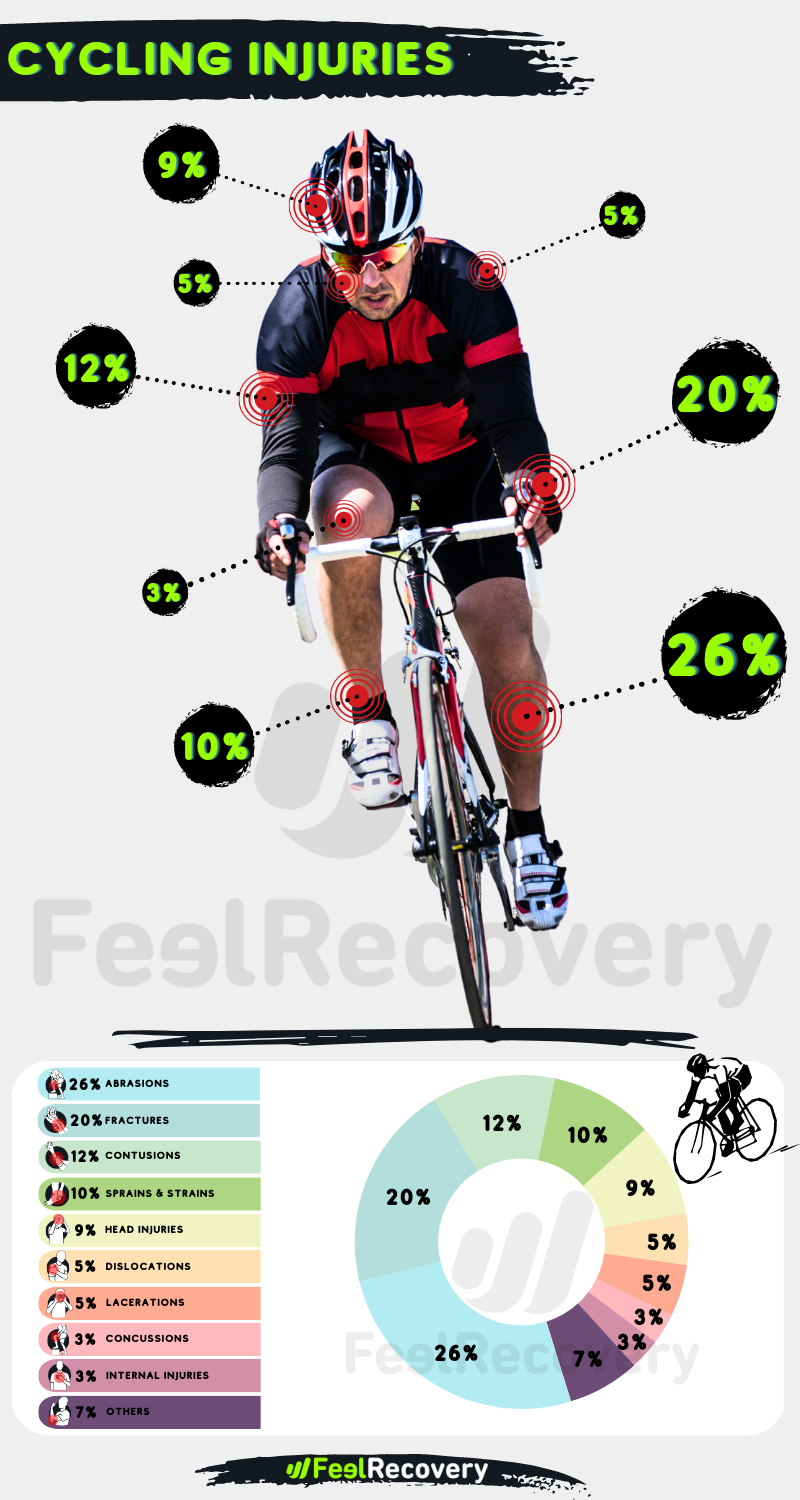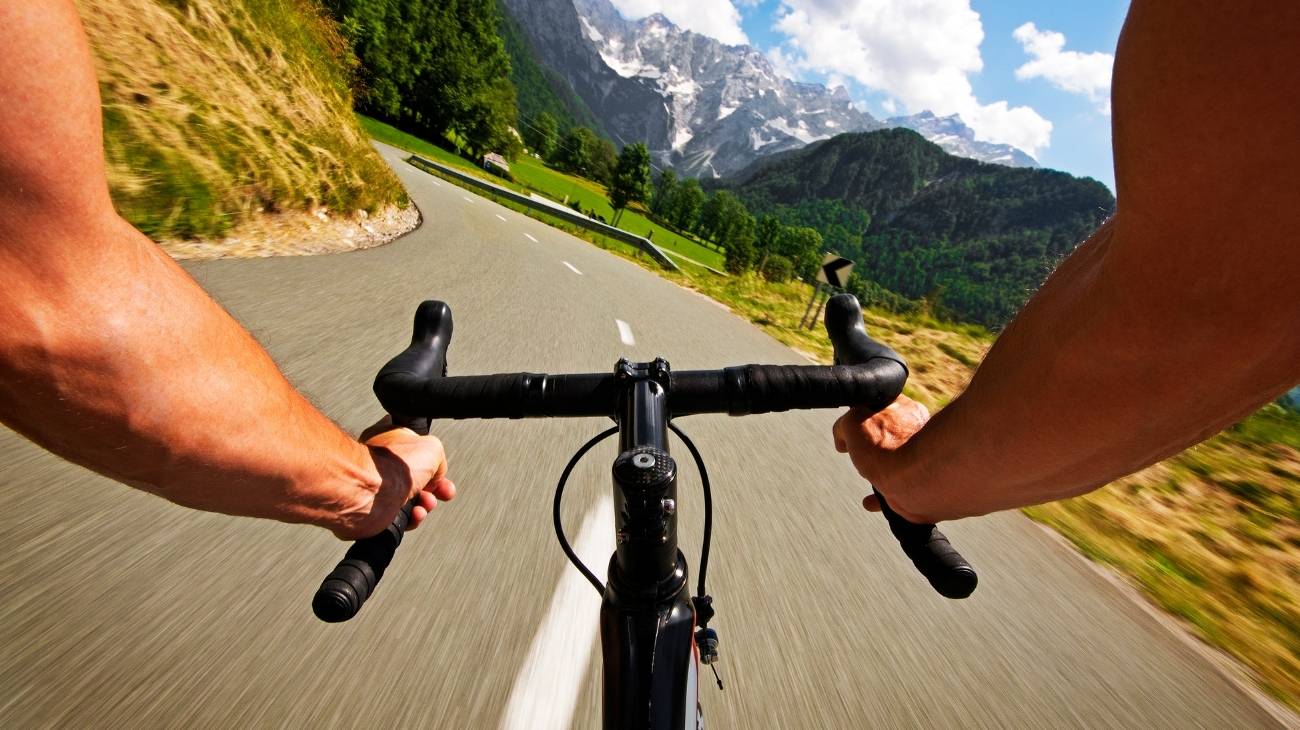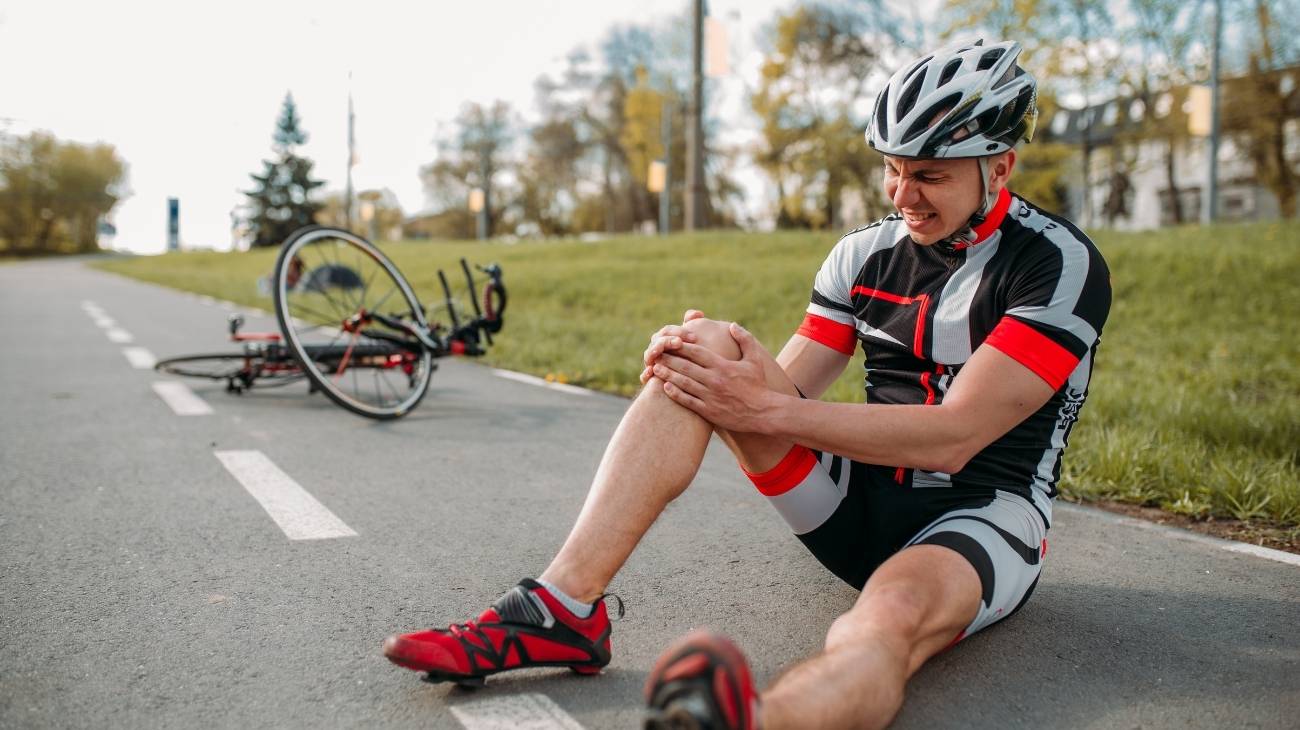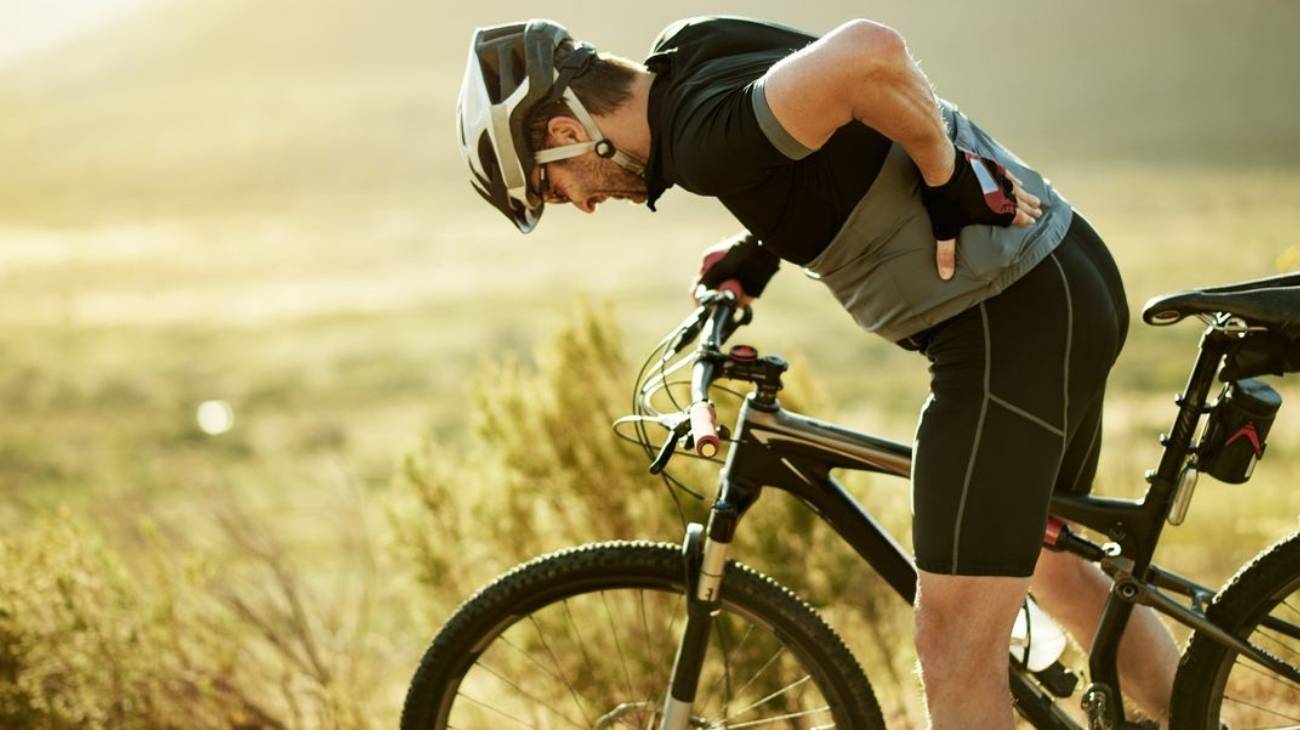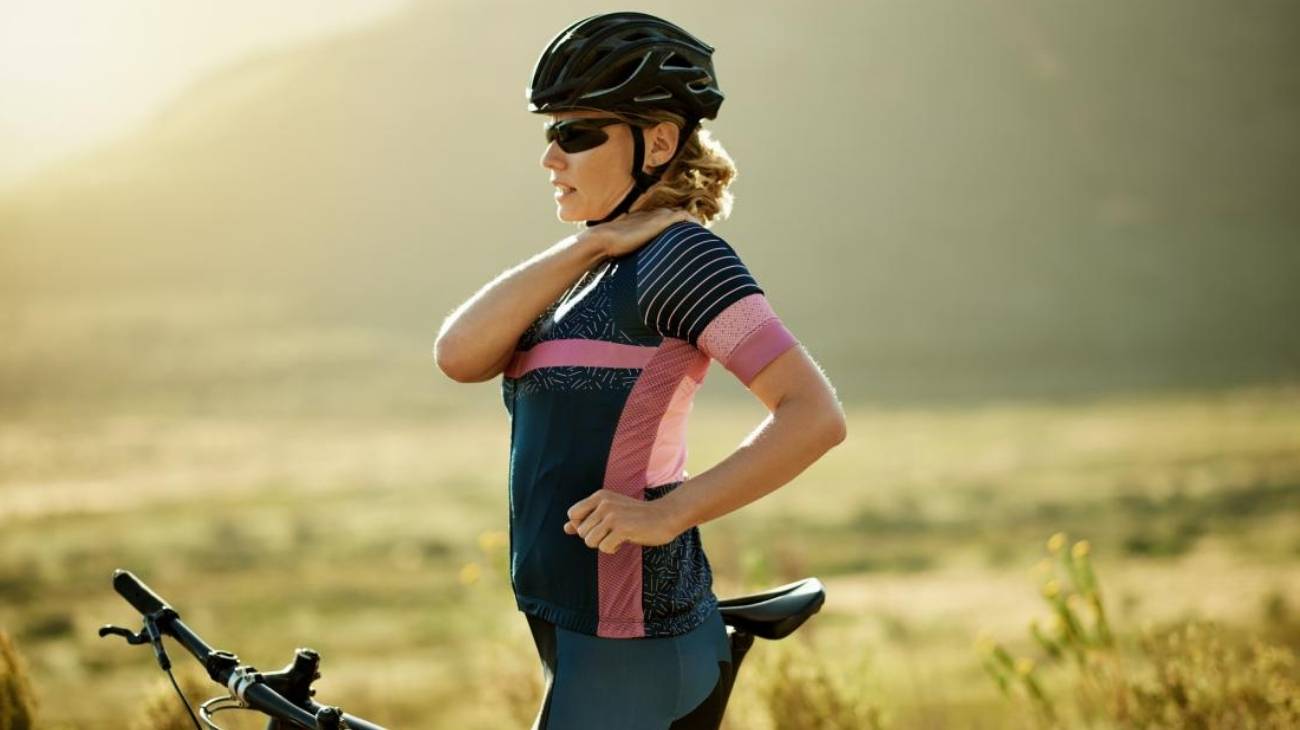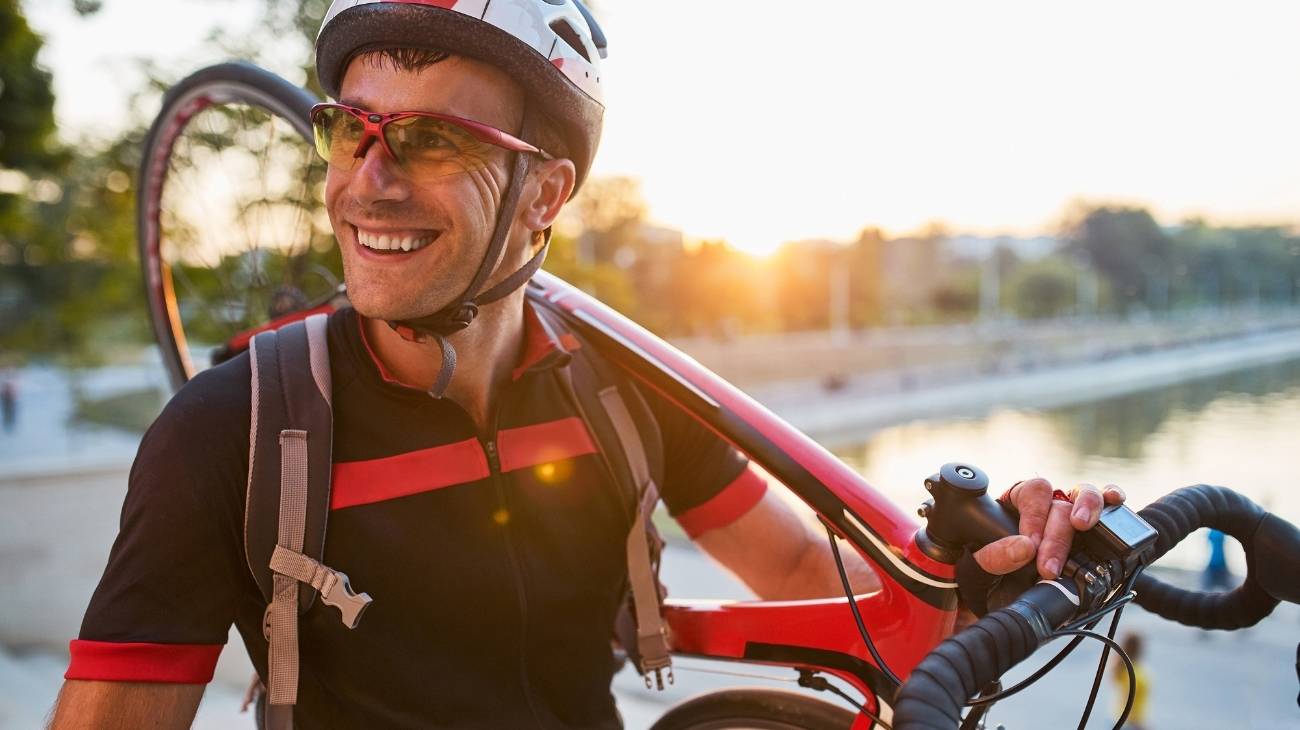If you are new to the sport, you should know that the vast majority of cycling aches and pains are due to poor bike set-up. Injuries are usually concentrated in the legs and lower back.
In this article we introduce you to the most common cycling injuries and the prevention methods that work best, recommended by expert coaches. There are two types of cyclists in the world: those who fall and those who injure themselves by not taking the necessary precautions.
What are the most common types of injuries and pain in cyclists?
All sports are important for health and all have a probability of injury. In cycling, this likelihood depends a lot on the athlete's technique and how well their body fits the bike. Check out this list of the most common injuries in professional road, mountain or track cycling that you should know about:
- Tendinitis: Achilles and patellar tendinitis are the most common injuries you will get as a cyclist, because both the Achilles and patellar tendons are the ones you will use the most while you are on the bike. They occur when these soft tissues become inflamed or irritated from overuse, resulting in constant pain in the affected joint.
- Chafing: Skin chafing is more common than you think. The use of inadequate clothing and a high saddle level cause excessive rubbing of the skin against the fabric. This constant rubbing causes the crotch areas to become red and rashes that can bleed if not properly treated. Leveling the saddle lowers pelvic movement and friction.
- Back and neck pain: Both ailments are due to the position the cyclist is usually in. Remember that almost all the cyclist's weight falls on the lumbar area and pedalling makes the back suffer the consequences of all this effort. By having a very inclined position, the traction energy that should be in the legs is transferred to the back.
- Numbness of the hands: This can be a risk in high-speed races because you always want to be in full control of the direction you are going. Few cyclists take real notice of hand numbness. It is caused by having the saddle too far back or the handlebars too low, and pressing your hands too hard on the handlebars also affects it. This scenario causes an excessive energy and weight load on the cyclist's hands.
Best products for cycling injury recovery
Bestseller
-
2 Calf Compression Sleeve (Black/Gray)
$19.95 -
2 Calf Compression Sleeve (Green/Navy)
$19.95 -
2 Calf Compression Sleeve (Pink/Bordeaux)
$19.95 -
2 Knee Compression Sleeve (Black/Gray)
$19.95 -
2 Knee Compression Sleeve (Green/Navy)
$19.95 -
2 Knee Compression Sleeve (Pink/Bordeaux)
$19.95 -
2 Patella Knee Strap (Black/Gray)
$14.95 -
2 Patella Knee Strap (Green/Navy)
$14.95 -
2 Patella Knee Strap (Pink/Bordeaux)
$14.95 -
2 Thigh Compression Sleeve (Black/Gray)
$19.95 -
2 Thigh Compression Sleeve (Green/Navy)
$19.95 -
2 Thigh Compression Sleeve (Pink/Bordeaux)
$19.95 -
Acupressure Mat and Pillow (Black/Gray)
$49.95 -
Acupressure Mat and Pillow (Green/Navy)
$49.95 -
Acupressure Mat and Pillow (Pink/Bordeaux)
$49.95 -
Acupressure Pillow (Black/Gray)
$29.46 -
Acupressure Pillow (Green/Navy)
$29.46 -
Acupressure Pillow (Pink/Bordeaux)
$29.46 -
Foot Massage Roller for Plantar Fasciitis (Black)
$19.95 -
Foot Massage Roller for Plantar Fasciitis (Green)
$19.95 -
Foot Massage Roller for Plantar Fasciitis (Pink)
$19.95 -
High Density Foam Roller for Muscle (Black/Gray)
$29.95 -
High Density Foam Roller for Muscle (Green/Navy)
$29.95 -
High Density Foam Roller for Muscle (Pink/Bordeaux)
$29.95 -
Ice Massage Roller Ball (Black)
$39.95 -
Ice Massage Roller Ball (Green)
$39.95 -
Ice Massage Roller Ball (Pink)
$39.95 -
Microwaveable Heating Pad for Pain Relief (Hearts)
$19.95 -
Microwaveable Heating Pad for Pain Relief (Oxford)
$19.95 -
Microwaveable Heating Pad for Pain Relief (Sport)
$19.95 -
Pack 2 In 1 Foam Roller High + Soft Density (Black/Gray)
$29.95 -
Pack 2 In 1 Foam Roller High + Soft Density (Green/Navy)
$29.95 -
Pack 2 In 1 Foam Roller High + Soft Density (Pink/Bordeaux)
$29.95 -
Soft Density Foam Roller for Recovery (Black)
$29.95 -
Soft Density Foam Roller for Recovery (Green)
$29.95 -
Soft Density Foam Roller for Recovery (Pink)
$29.95 -
Sport Compression Socks (1 Pair) (Black/Gray)
$19.95 -
Sport Compression Socks (1 Pair) (Green/Navy)
$19.95 -
Sport Compression Socks (1 Pair) (Pink/Bordeaux)
$19.95 -
Trigger Point Massage Stick (Black)
$14.95 -
Trigger Point Massage Stick (Green)
$14.95 -
Trigger Point Massage Stick (Pink)
$14.95
List of injury prevention methods in cycling
You may think you only need to warm up your body before cycling, but professional cycling requires you to attend to other possibilities such as recovery massages and alternative therapies such as acupressure.
Check out these tips to prevent potential cycling injuries, aches and pains:
Warm up properly
We know you work hard to start your cycling career, so it would be a shame if a competition ended badly because of an inadequate warm-up. Although you need to be at 100% from the start, there are races where you can increase the pace progressively; in both cases your body must be prepared.
To perform a good warm-up routine, start by bending your torso sideways, gently and without overstretching. Leaning on an object (your bike, for example), stretch each leg backwards to wake up your quadriceps. You can also do some strides, joint movements of both legs and arms.
Once you have warmed up every joint in your body, get on the bike and pedal at half power. Then follow the warm-up protocol according to the type of race you will be competing in.
Finish your workouts with a cool-down
In cycling, the best way to cool down your body after warming up is to ride your bike at a walk, i.e. at 40% of your power. Afterwards you can get off and walk for 10 to 15 minutes, people may wonder why you are walking if you have a bike, but few people will know that it is a way to cool down your body to avoid injury and improve recovery.
What we want is to facilitate the adjustment of your metabolism and thus better assimilate the waste substances generated by your body. The blood circulation is increased and these substances are recycled more quickly, a situation that we must regulate by cooling down. If you want to be a good professional athlete, you should never get off your bike to shower, sit or lie down without first cooling your body by stretching and relaxing properly.
Good nutrition and hydration
The goal is not to be "satisfied" with a heavy meal, the purpose is to get nutrients into your mouth that you will use in training and competition. If you don't have the resources to have the advice of a sports nutritionist, there are basic recommendations for eating healthily and not gaining kilos that will affect you later.
- Eat less: When training 12 hours a week or 4 hours a day, measure the energy you put out and work out how much you actually need to eat to be strong and not overweight.
- Plan: It is better to get up early and eat at least five times a day than to eat twice and in large quantities. Doctors explain that the body is not the same in the morning as it is in the afternoon and that each meal has a purpose.
- What to eat first? Soups and salads are healthy, although your body will also ask for protein and carbohydrate. Never eat with a craving, which means that you should not wait until you are too hungry to eat.
- Should you eat more whole foods? This is only when your training pace slows down, as it means you don't expend as much energy. As with nutrition, you should not wait until you are thirsty when it comes to hydration. It's a sign that you're dehydrated and that affects performance.
- Drink a small amount of water every 20-30 minutes if you are training, even if you are not thirsty, your body still consumes the stored water to get you through the long days on the bike.
Improve your fitness
As cycling requires strength, endurance and balance, all training should be based on these three skills. Your arms support part of your body weight and your legs propel you forward, so your limbs need to be really strong.
Although you will have muscle mass from training, it should not be too bulky as it can be an extra weight that will slow you down, remember that large muscles will need large amounts of oxygen to work and this will cause you to consume more energy, it is all about becoming more efficient and having the muscle mass you need as a cyclist.
Every cyclist needs a strong heart that carries blood well throughout the body, strong lungs with an ability to keep up the pace in a competition that usually lasts for hours. So cardiovascular and lung training must be adequate if you want to win many races. There are times when there seems to be a "swarm" of cyclists, to avoid falling and injuring yourself you need quick reflexes and good coordination. Your eyes and mind must always be alert.
Sports massage
Depending on the type of massage, they strengthen the heart and relax the muscles. It is not recommended to get a massage after a severe injury, so they should be focused on prevention and not correction. Hours and hours on a bike will put a lot of wear and tear on the body, muscles become numb and pain can take over joints.
Skilled hands open up the blood vessels and release muscle pressure. They also release toxins accumulated in training. As a competition approaches, it is advisable to receive massages that allow the muscles to regenerate after each training session. Massages allow nutrients to circulate better in the body and tendons to begin to relax. Are massages recommended after a race? Yes, as long as it is not to address an injury.
Use of hot and cold therapies
When you finish an intense routine, it is likely that there is an injury or ailment that you are not yet aware of. In these cases, hot and cold therapies serve different purposes. The use of cold serves as a vasoconstriction. What does this mean? It means that the blood flow is reduced in the area where you apply ice. Relaxing tendons and ligaments is also facilitated by the cold, as well as reducing the pain you feel due to the overload of energy from training.
Can you accompany it with a massage? Yes, as long as it is not a serious injury, such as a sprain. Applying cold and compression at the same time also produces good results after hard training. Heat, on the other hand, causes vasodilation and raises the blood pressure in the injured area.
The heat removes possible residues and halogen substances that make the pain worse. For muscle contractures, heat is best. It reduces muscle burning, reduces numbness and increases flexibility. Heat is better in the long term, but only a sports doctor will know when to apply heat or cold to an ailment.
Use of compression garments
Ten years ago, the use of compression garments was limited to addressing trauma. However, their use is expanding in the sports world to improve muscle performance. During training and competition, they help to keep the protected area active, in addition to improving tendons, ligaments and muscle mass.
There are compression sleeves and compression stockings that help to relax, both of which are recommended to regenerate tissues after a workout or race. These should be worn for at least 90 minutes after physical activity. In that time, compression garments give you a feeling of muscle lightness.
Do you have to wear them all the time? No, in the long term there are negative effects of any compression garment, such as problems with blood flow and a reduction in the body's ability to adapt to the change of pace on its own.
Use of acupressure therapies
Each acupressure session should last no longer than one hour and should be performed by an experienced therapist. It is a technique similar to acupuncture, but does not require needles for its application. Both techniques seek to relax the body by draining energy stored in one place, usually in the joints. Your body has 14 main meridians, each related to an organ of the body. By pressing these meridians, the body releases endorphins that reduce muscle pain.
Like all massage, acupressure increases heart rate and blood pressure, which means that nutrients reach the affected area faster. Fingers and palms are used to activate local points (affected area) and trigger points, which exert a response in the area of injury and are not necessarily close to it.
Use of thermotherapy and cryotherapy
These are specialised techniques used for treatment and long-term injury outcomes. Even if you are excellent on the bike, you are not exempt from suffering an injury that takes longer to recover from than you think, in which case thermotherapy and cryotherapy can help.
Both are used in rheumatic and traumatological processes. With them you get pain relief, improvement in contractures, sprains or strains. Thermotherapy relieves pain in areas of the body that are "cold" and where the aim is to increase the temperature. It is ideal for chronic ailments such as sprains.
What about cryotherapy? There is technological equipment with which you can achieve favourable results for the body. It helps in the anti-inflammatory process, such as in ruptures and tendinitis. There is already equipment on the market that can work both cold and heat on the body, without having to take breaks. However, its use must be supervised by a specialist.
Use of good equipment
One of the things to be clear about is that you should avoid cotton fabric, it is not favourable for the sweating process, although it is a natural fibre, cotton will accumulate a lot of sweat and soak your clothes. It is important that the fabric is synthetic, tight to the body and at the same time comfortable for the movements you make on the bike. The jersey covers almost the entire body of the cyclist, absorbs sweat and is breathable, it helps to cut the wind in your path and therefore should not be a garment that is loose fitting and makes wind resistance.
The bib shorts are a complement to the shorts, they allow you to be more comfortable when sitting for long hours on the saddle. They are a kind of cushioning pads that act as shock absorbers in the buttock area. And there are cycling shoes for all types and disciplines. If your discipline is track cycling, there is even a lining for the shoes to prevent wind resistance, although these linings are also used for road cycling.
References
- Cohen, G. C. (1993). Cycling injuries. Canadian Family Physician, 39, 628. https://www.ncbi.nlm.nih.gov/pmc/articles/PMC2379777/
- Wanich, T., Hodgkins, C., Columbier, J. A., Muraski, E., & Kennedy, J. G. (2007). Cycling injuries of the lower extremity. JAAOS-Journal of the American Academy of Orthopaedic Surgeons, 15(12), 748-756. https://journals.lww.com/jaaos/Abstract/2007/12000/Cycling_Injuries_of_the_Lower_Extremity.8.aspx
- Mellion, M. B. (1991). Common cycling injuries: management and prevention. Sports Medicine, 11, 52-70. https://link.springer.com/article/10.2165/00007256-199111010-00004
- Mulvaney, C. A., Smith, S., Watson, M. C., Parkin, J., Coupland, C., Miller, P., ... & McClintock, H. (2015). Cycling infrastructure for reducing cycling injuries in cyclists. Cochrane database of systematic reviews, (12). https://www.cochranelibrary.com/cdsr/doi/10.1002/14651858.CD010415.pub2/full
- Sanner, W. H., & O'Halloran, W. D. (2000). The biomechanics, etiology, and treatment of cycling injuries. Journal of the American Podiatric Medical Association, 90(7), 354-376. https://japmaonline.org/view/journals/apms/90/7/87507315-90-7-354.xml
- Kotler, D. H., Babu, A. N., & Robidoux, G. (2016). Prevention, evaluation, and rehabilitation of cycling-related injury. Current sports medicine reports, 15(3), 199-206. https://journals.lww.com/acsm-csmr/Fulltext/2016/05000/Prevention,_Evaluation,_and_Rehabilitation_of.18.aspx
- Aldred, R. (2016). Cycling near misses: Their frequency, impact, and prevention. Transportation Research Part A: Policy and Practice, 90, 69-83. https://www.sciencedirect.com/science/article/pii/S0965856416303639
- Kronisch, R. L. (1998). Mountain biking injuries: fitting treatment to the causes. The Physician and sportsmedicine, 26(3), 64-70. https://www.tandfonline.com/doi/abs/10.1080/00913847.1998.11440349
- Hollingworth, M. A., Harper, A. J., & Hamer, M. (2015). Risk factors for cycling accident related injury: The UK Cycling for Health Survey. Journal of Transport & Health, 2(2), 189-194. https://www.sciencedirect.com/science/article/abs/pii/S221414051500002X
- Embree, T. E., Romanow, N. T., Djerboua, M. S., Morgunov, N. J., Bourdeaux, J. J., & Hagel, B. E. (2016). Risk factors for bicycling injuries in children and adolescents: a systematic review. Pediatrics, 138(5). https://publications.aap.org/pediatrics/article-abstract/138/5/e20160282/60425/Risk-Factors-for-Bicycling-Injuries-in-Children

